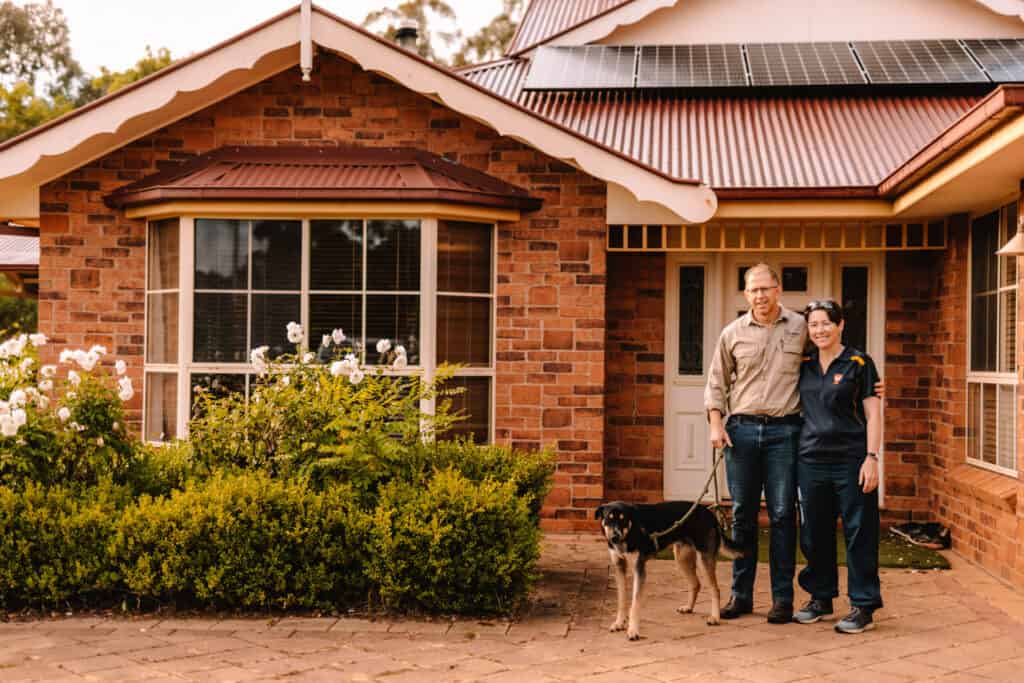History of the Australian Rural Leadership Foundation
Our story begins in the early nineties when Rural Industries Research and Development Corporation board members wanted to create an organisation that would influence change across Australian rural industries as a whole as well as in these communities. Since then, we’ve been making history, with more than 2,000 alumni across the country.
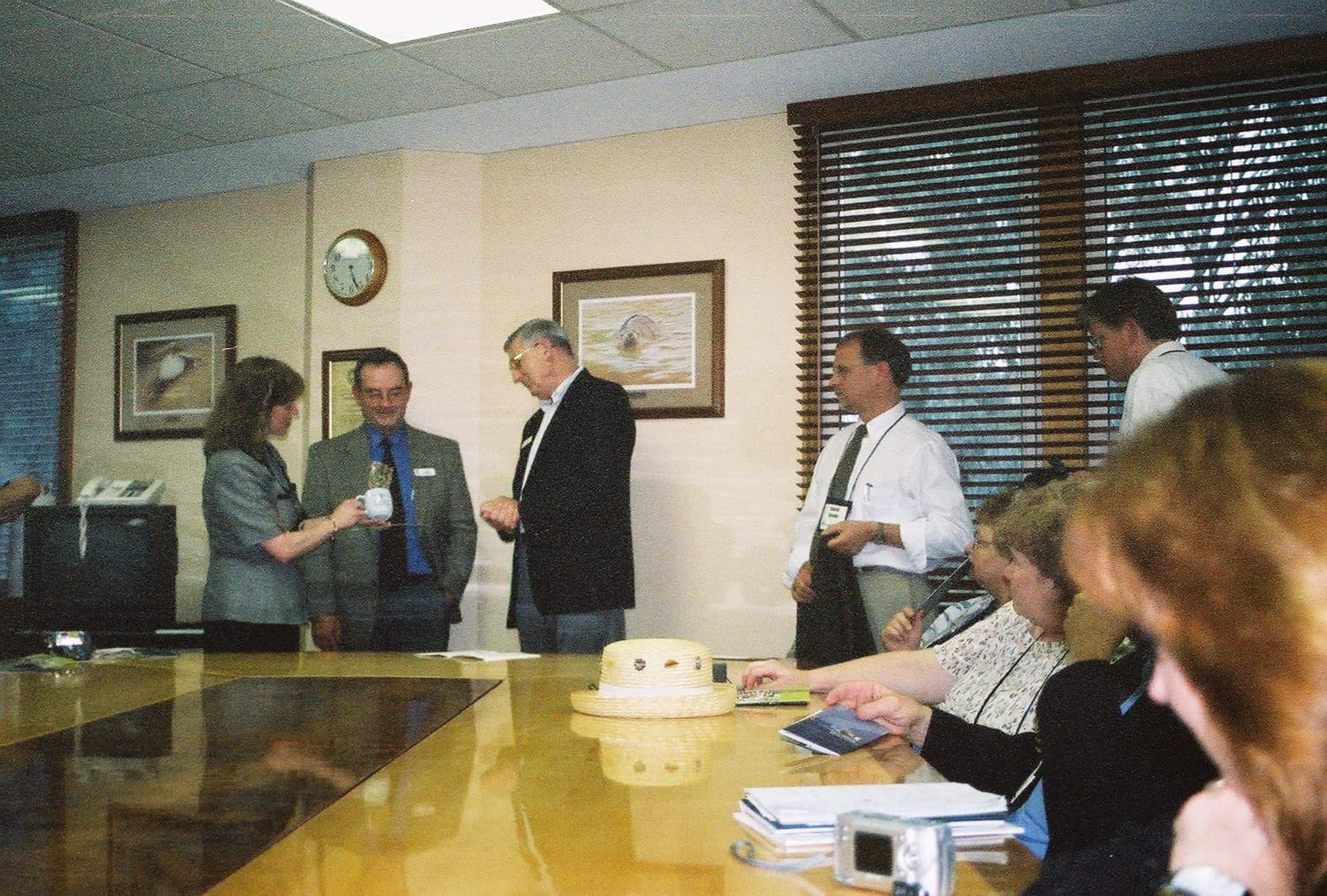
We were born from the realisation that leadership makes a community.
1990
Rural Industries Research and Development Corporation (RIRDC) board members noticed a key difference between thriving rural communities and those perceived as struggling. It was not an inherent lack of natural resources or strategic position but an individual or network taking action.
They concluded leadership was required, not only in state and national political roles, but within local schools, on hospital boards, within the community, and in sporting groups and local industries.
29 April 1993
Day one of the first Australian Rural Leadership Program.
The participants were assembled in Kununurra, Western Australia. They were addressed by then executive director Mike Beckingham, who concluded his speech with this challenge:
“This course is a once in a lifetime opportunity for you to develop yourself. We will provide the setting, but what you get from the course will depend largely on you. I would like to start you on a path which will lead to your shared vision for rural Australia. Vision is the most important element in leadership. Without it you cannot lead. It is not the only element, there are many other qualities and characteristics required if you are to realise the vision. These you should identify as you expand your readings on leadership and as you are exposed to leaders in many walks of life”
So started the experience that changed their lives and the industries and communities from which they were drawn.
Since then, more than 800 Australian Rural Leadership Program participants have followed their path. They have been joined by more than 1000 who have completed a range of other leadership courses.
That day was the culmination of two years of preparation
following the initial concept of the Rural Industries Research and Development Corporation (now AgriFutures Australia) to foster leaders as the way to enhance rural industries and communities. They had
seen the model succeed elsewhere, notably in the US with the Californian Agricultural Leadership Program. It was not an inherent lack of natural resources or strategic position but an individual or network taking action.

After consulting widely with rural industries and communities, the RIRDC was determined to create a program that operated Australia wide, was independently run by a high-profile-board and was owned and principally financed by industry and the community.
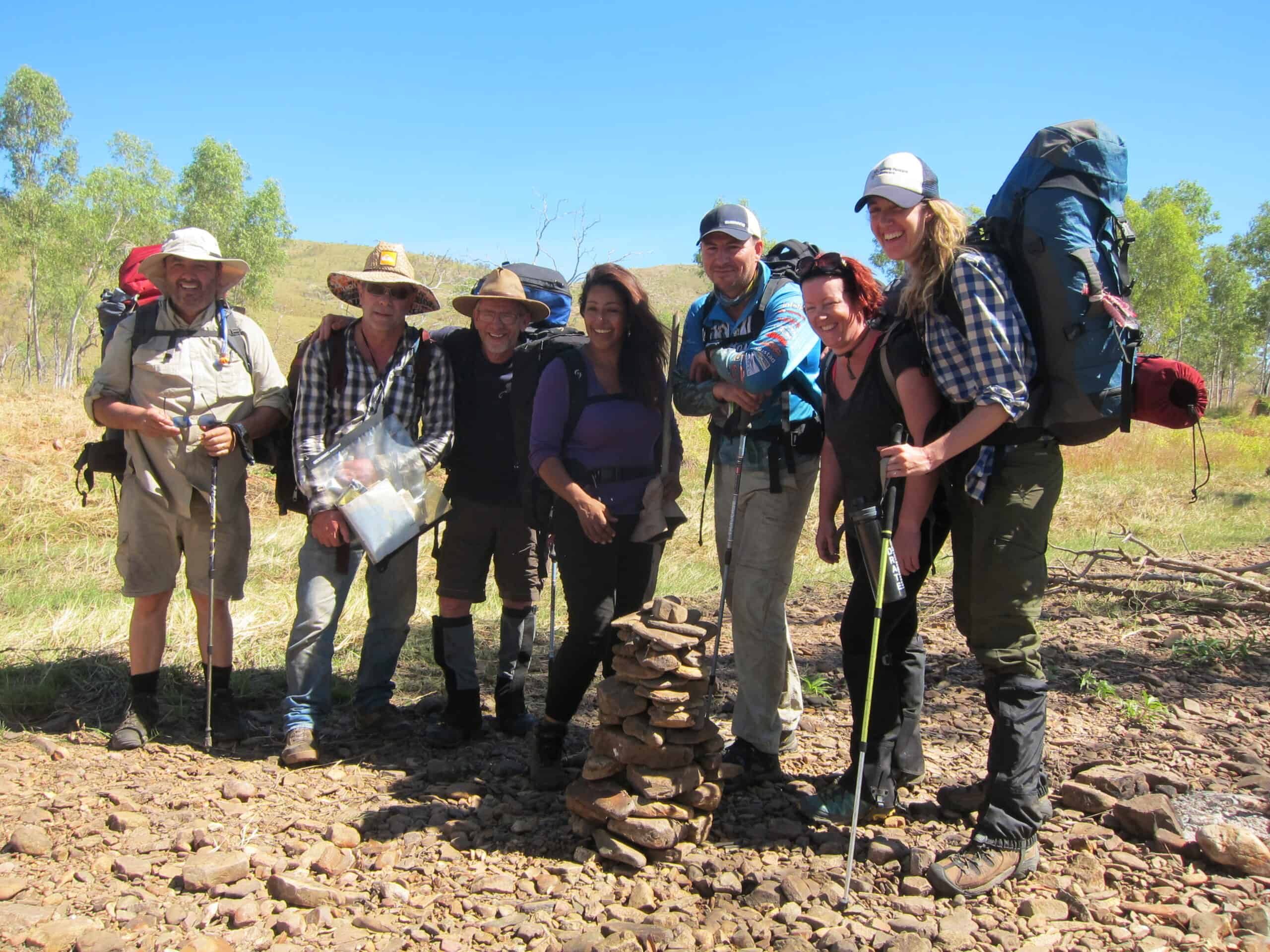
The Australian Rural Leadership Foundation was established in 1992
And the Australian Rural Leadership Program was officially launched the following month. The style of the program was based on military college courses, reflecting the background of Beckingham and his colleague (and later executive director) John Quantrill. As it has continued to for 30 years, the program started with the immersive, experiential 13-day course in the Kimberley, designed for team-building and personal growth. Over the next two years of the part-time course, the cohort undertook sessions in other parts of Australia and, importantly, one overseas, to engage with leaders from government, business, unions and community organisations.
The RIRDC underwrote the first 5 years of the program with $1.35million.
Other sponsors were the research and development
organisations representing grains, fisheries, dairy, sugar, cotton, meat and egg sectors. Such sector funding guaranteed nominated candidates from those industry areas. The following year general scholarships were supported, thanks to funding from Vincent Fairfax Family Foundation, QBE Insurance, Rural Press Limited and the National Farmers’ Federation.
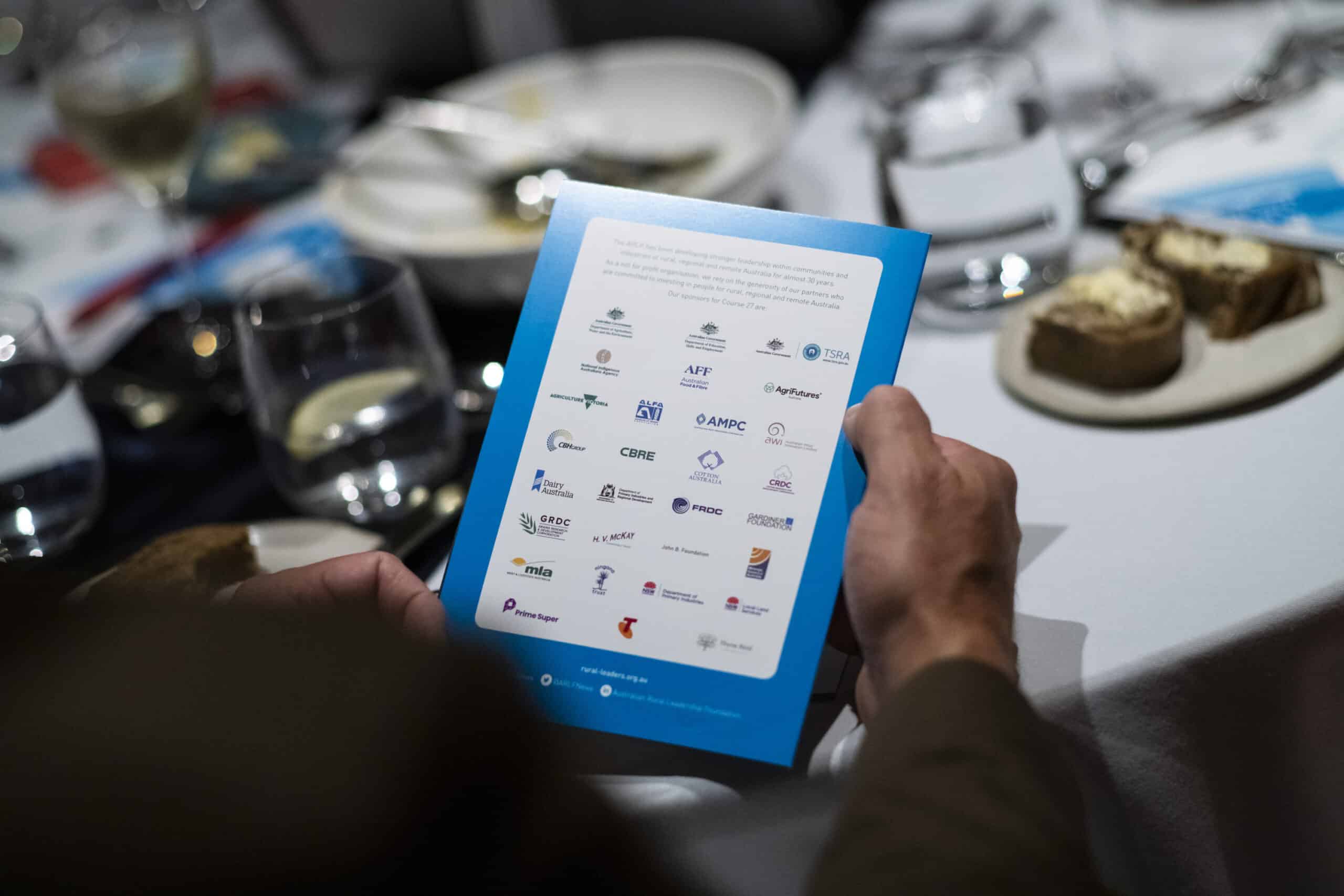
1997
The course was an instant success.
The course was an instant success. An independent review of the program in 1997, which compared it with leadership programs in Australia and elsewhere, commended the Australian Rural Leadership Foundation on “an exciting, world-class” program and said the participants had developed skills, knowledge and contacts that would enable them to take on key leadership roles in industry and the community – indeed, “this is already happening”.
The review also made recommendations for the future of the Australian Rural Leadership Foundation and its program, including considering leadership development modules that could be used in the regions; supporting mid-level leadership to feed the Australian Rural Leadership Program; emphasise the development of the person and their family and community, and expand to embrace more female and non-Anglo Saxon leaders.
By course 7 in 2000, almost 40 per cent of the cohort were women.
2000
The inaugural First Nations participants were Russell Taylor and Rod Burke (ARLP 2). Russell and Bunuba man Joe Ross, from Fitzroy Crossing, who completed Course 5 in 1999, felt the need for a specific leadership program for First Nations people. This resulted in the conception of what is today the Australian Indigenous Leadership Centre. Later Toshie Kris (ARLP 10) went back to the Torres Strait Regional Authority and said it needed to invest in leadership development through the ARLF. So started a relationship that has seen the introduction of a number of courses for Torres Strait Islander school leavers, youth and women since 2010.
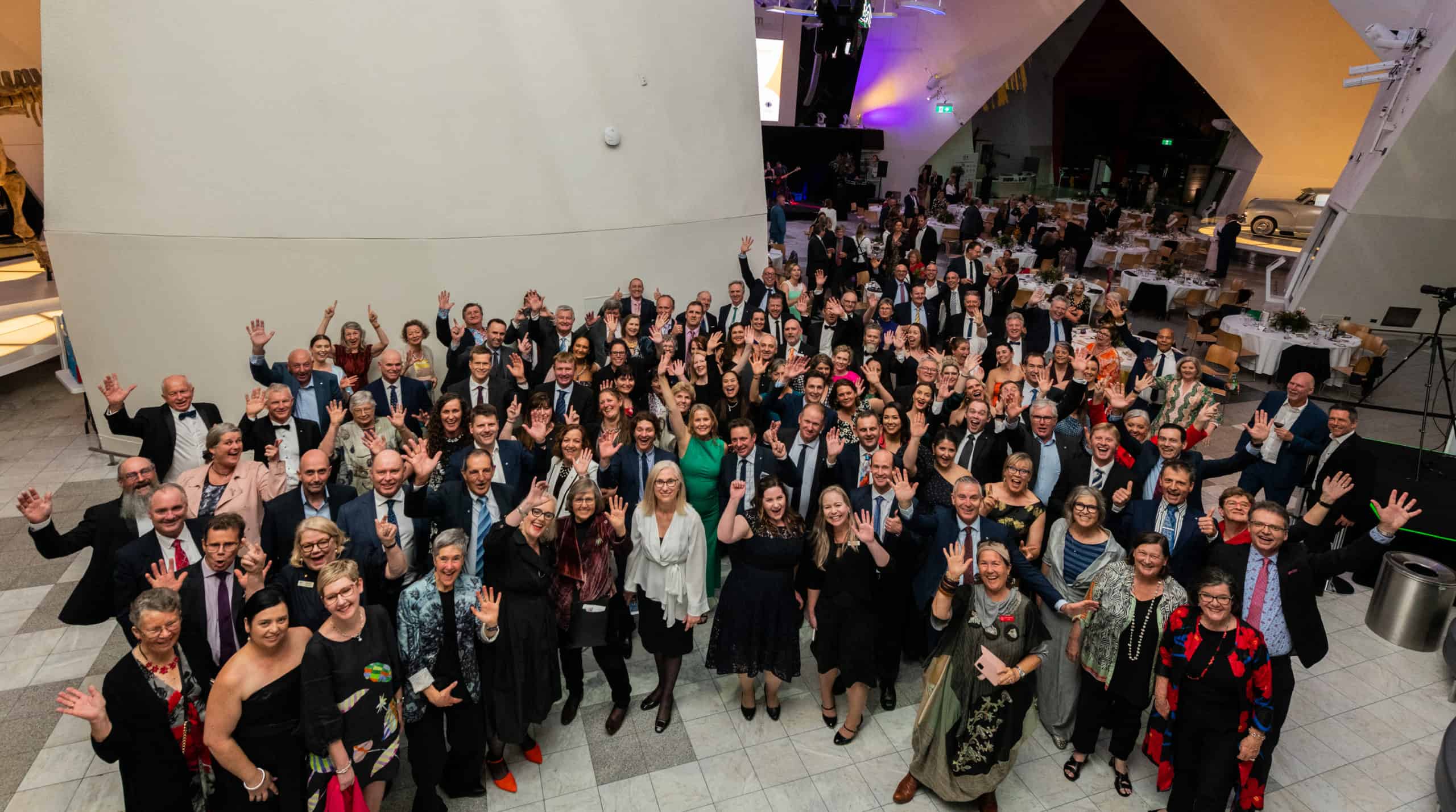
Today, we run the Milparanga Aboriginal and Torres Strait Islander Leadership programs.
It’s run as a suite of four courses for established and emerging Indigenous leaders and a mentoring program. The First Nations alumni, now numbering more than 400 (across all programs) are making a difference in all parts of Australia.
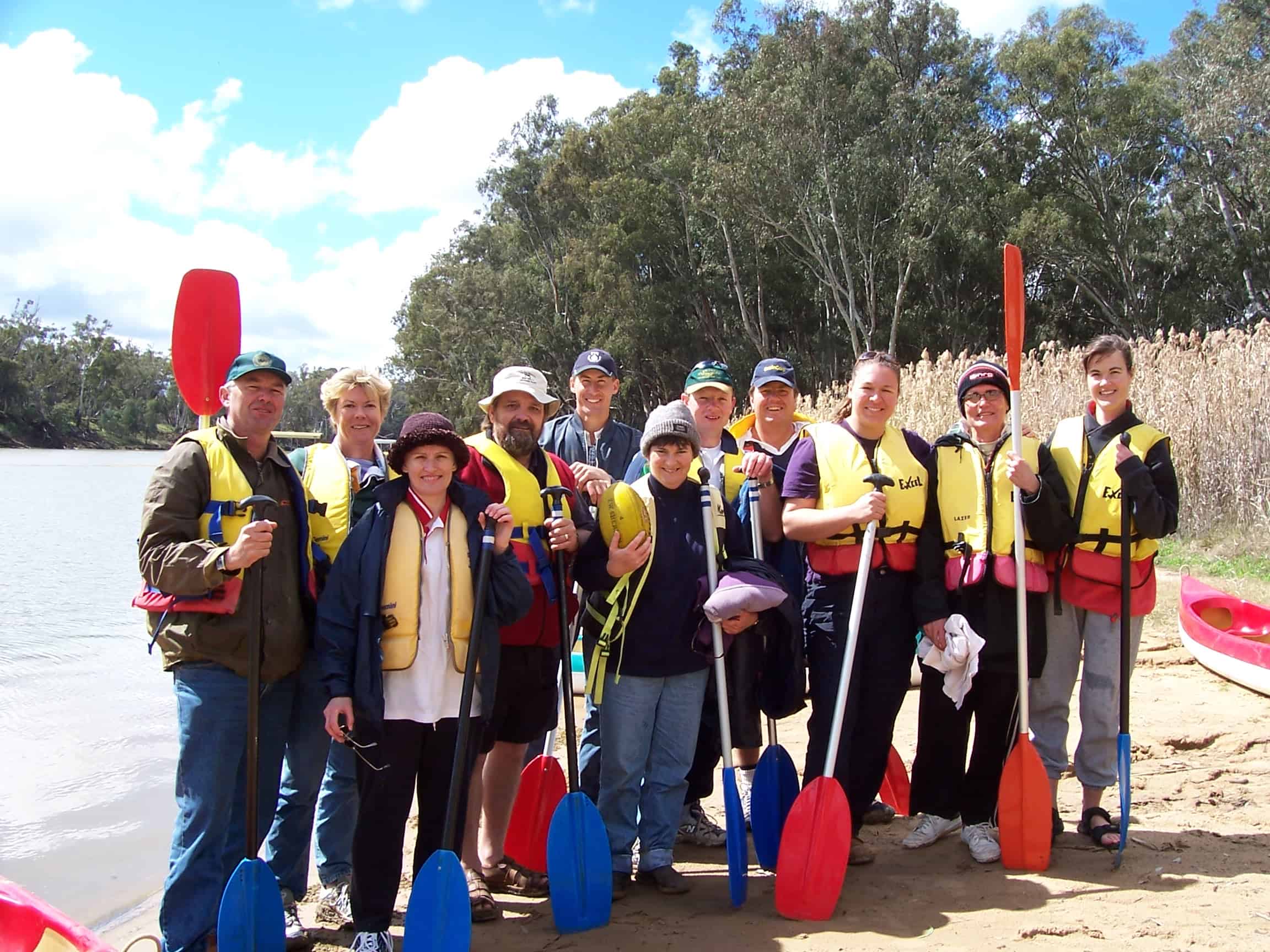
The development of new programs beyond the flagship started within the first 10 years.
2002
The first client-focused course was developed for the Murray-Darling Basin Commission, after a university study concluded that the unique needs of the Murray-Darling Basin could only be met through developing people who could facilitate cultural and attitudinal change in the Basin. The Murray-Darling Basin Leadership Program consisted of three week-long sessions conducted in three Basin locations over six months. In total, 46 participants took part between 2002 and 2005.
Since then, other sectors have sought bespoke leadership courses.
This includes rice growers, recreational fishing, Murray Irrigation, Gippsland region, wine industry, Torres Strait Island Authority, sheep meat industry, Blackwood Corporation and National Farmers Federation.

2009
Expanding our offerings.
The success of such programs, and the need to reduce our financial reliance on Australian Rural Leadership Program scholarships, prompted the then chief executive Lesley Fitzpatrick in 2009 to investigate expanding the range of offerings. Two new national programs were created for specific audiences – Training Rural Australia in Leadership (TRAIL) (from 2010), a program for emerging leaders, and TRAILblazers (from 2011-2015), a program for established leaders. Each is an eight-day residential program. Participants are self-funded or supported by industry.
The option for the Australian Rural Leadership Program to leverage tertiary credit points towards formal accreditation was explored on multiple occasions. Between 2012 and 2020, we partnered with James Cook University to design and deliver the Graduate Certificate of Rural Leadership. This engaged a number of Australian Rural Leadership Program alumni and participants as they chose to pursue further study.
Over the past three decades we've adapted to meet the changing needs of rural and regional Australia.
Its original vision was “a strong network of highly capable leaders from rural Australia serving their communities, their businesses, rural industries and the nation”. It changed in 2009 to simply: “Resilient rural communities”. The mission to get there has changed over the years too, reflecting changing attitudes to the notion of leadership and the broadening of our horizons. When the Australian Rural Leadership Program started, the mission was: “To seek out, inspire, motivate and develop leaders from rural Australia, to improve the competitiveness and profitability of rural industries in an international context.”
Today the purpose is: “To develop and exercise leadership for positive impact."
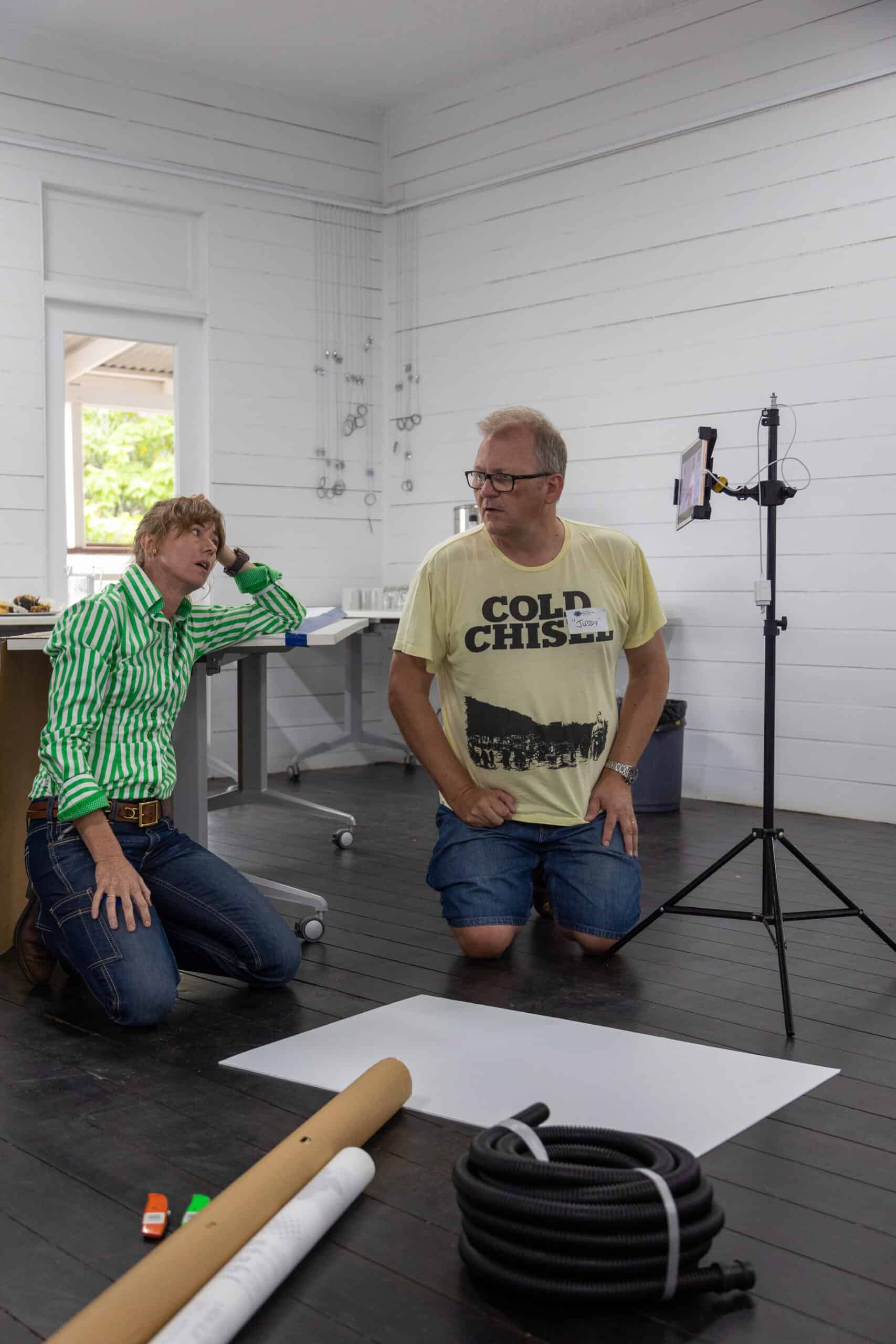
We've been able to adapt to Australia's changing landscape
The evidence of this change in orientation and responsiveness was apparent as early as the introduction of the Murray-Darling courses and the Indigenous leadership programs, however, the changes picked up pace in recent years to meet the disastrous circumstances of communities facing the effects of drought, bushfires, floods and the COVID pandemic.
These challenges demanded a new style of leadership that could foster networks – often across sectors – and encourage shared decision-making, action and responsibility. Developing modern leadership meant recognising that leadership is not a character element exclusive to decision-making CEOs, but is a practice exercised in all places regardless of one’s position or authority.
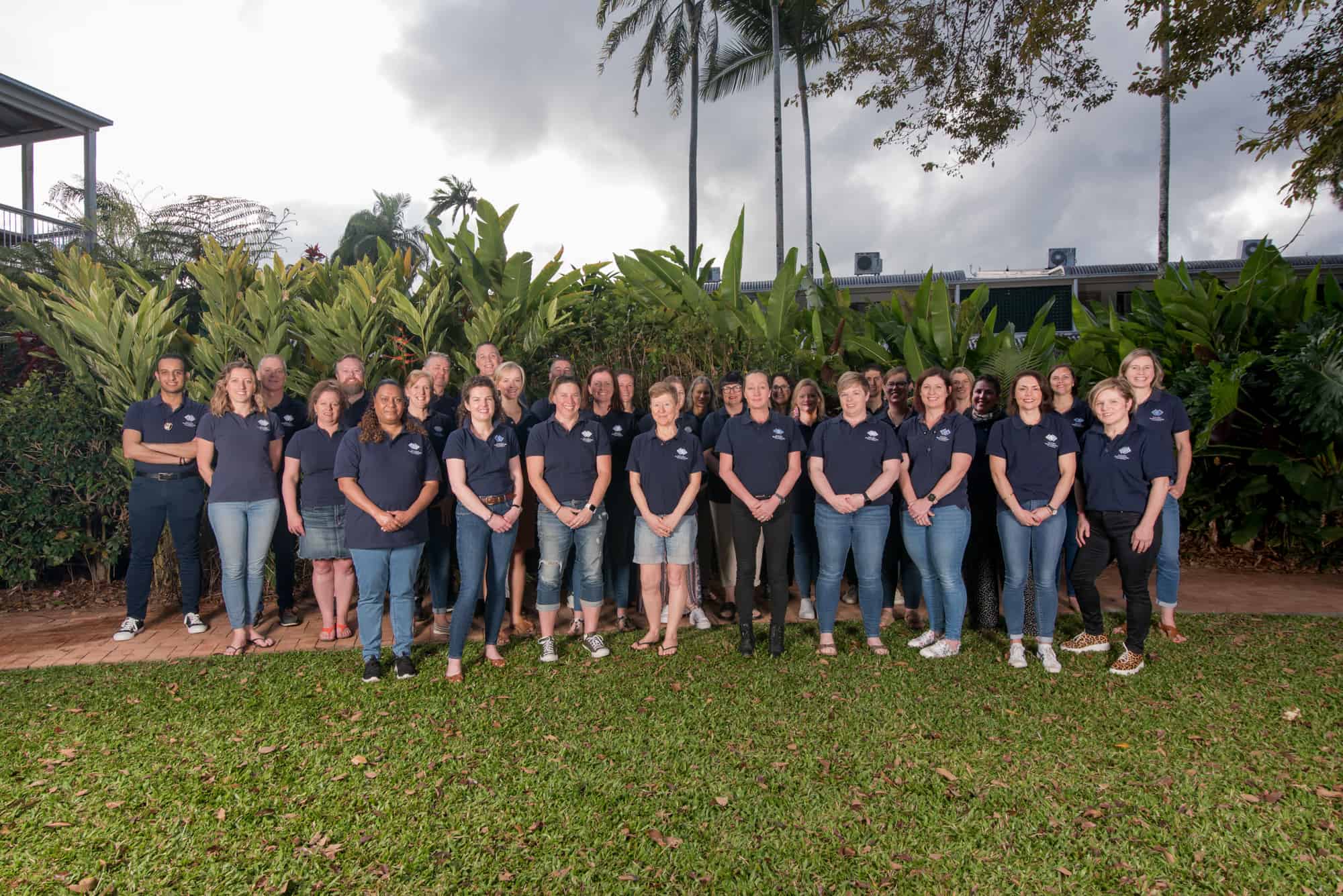
The ARLF governance and administration has developed over its three decades to meet its needs.
Still retaining an eminent board, the composition transitioned in the 2000s from 12 members, mostly alumni, to six or seven skills-based appointees. The staff has grown from three, based in a Canberra office in the first decade, to more than 35 working in various parts of Australia today.
A more recent development has been the appointment of associates.
Now numbering 19, the development of the associate network was premised on the need for a group of people who had deep familiarity with our approach and could play a key role in our impact across rural, regional and remote Australia. Spread as they are across Australia and in a range of businesses and sectors, these eminent individuals contribute expertise and experience, adding a new dimension to our capability and reach.
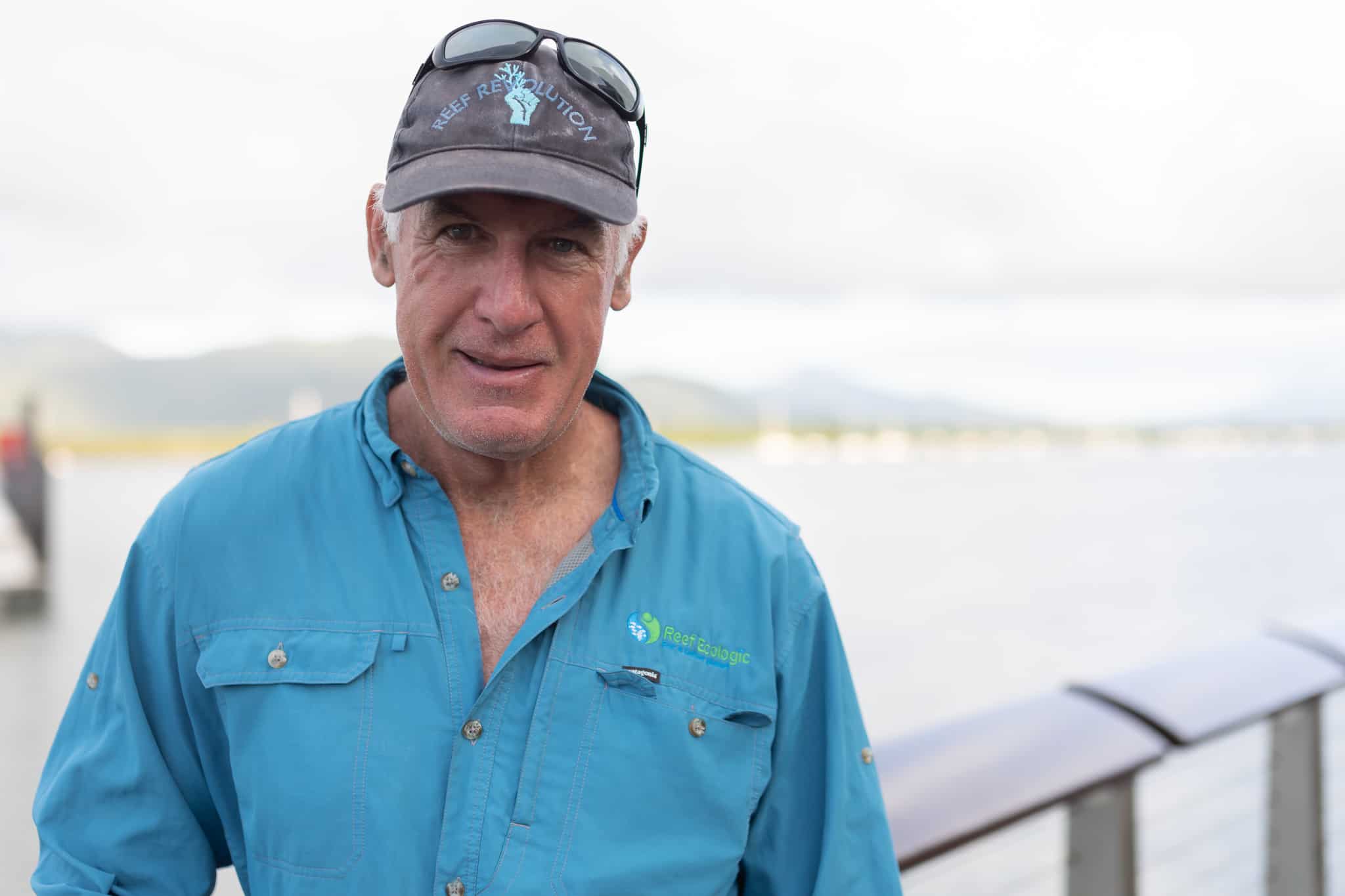
From the start, the graduates of the Australian Rural Leadership Program felt the bond of the shared experience.
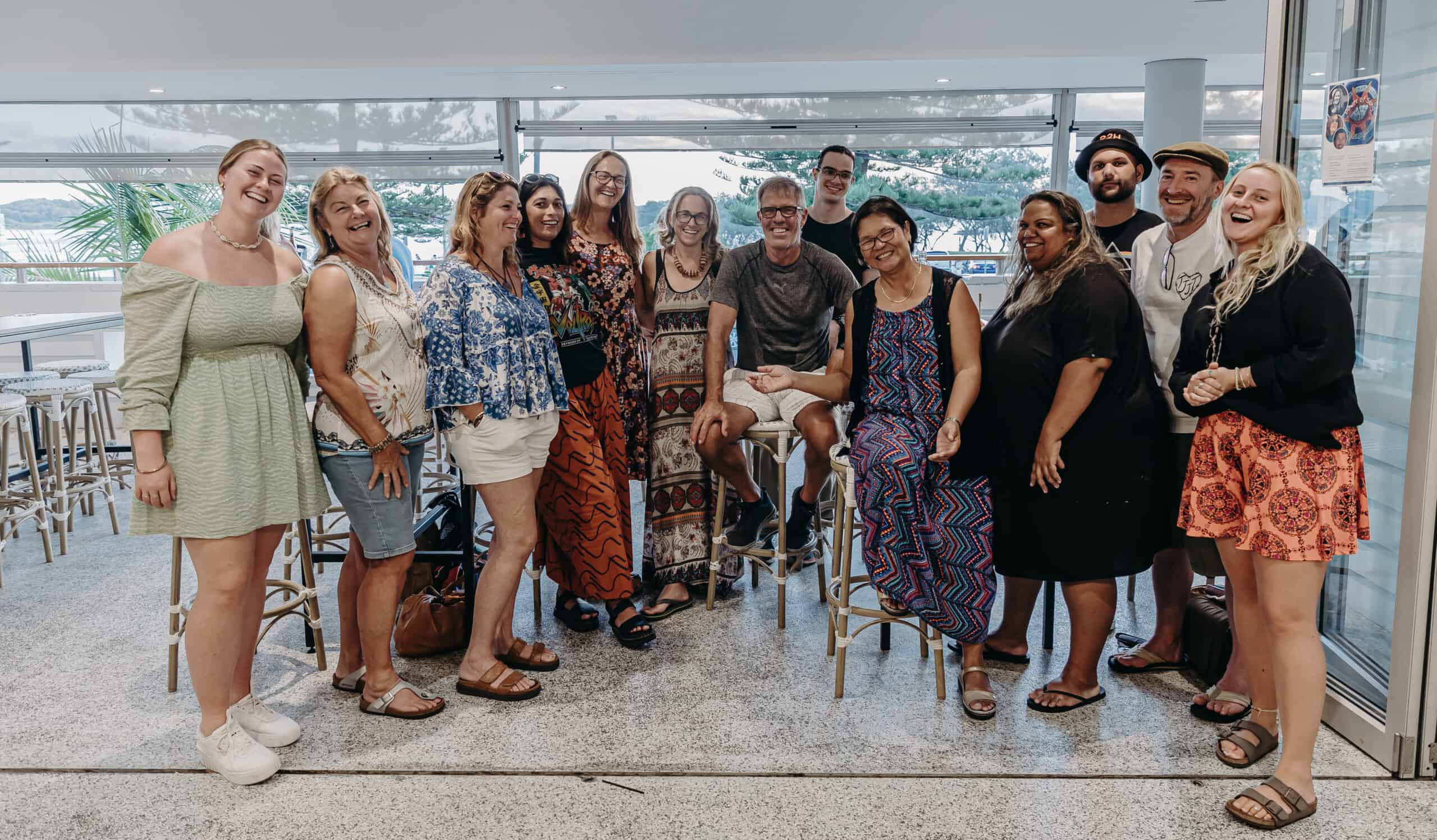
This led to the establishment of a formal network of alumni.
Initially, this took the form of a separate organisation, partly funded and allied with the Foundation. In 2005 it merged with the ARLF. The
ARLP has produced more than 800 graduates. Across all programs the ARLF can boast 2212 alumni, more than 500 having joined the ranks in the past year. Some live overseas now. They are an integral component of our success and continued impact. They stay involved – as guest speakers in the suite of current programs, as designated mentors, as sponsors, as board members (over the years), as staff, as role models, and as key influencers in the network of leadership that now reaches every corner of regional and rural Australia and beyond.
We continue to adapt.
In 2008, in keeping with the ever-shifting challenges within contemporary rural Australia, we refined and redeveloped our leadership model. In 2020, it was refined again. This model forms the basis for our curriculum and our suite of programs that develop the practical, innovative and ethical approaches needed for effective leadership in the businesses, organisations, industries and communities of rural Australia.
We’ll continue to refine our programs, ensuring they’re relevant in the contemporary landscape of Australia today.
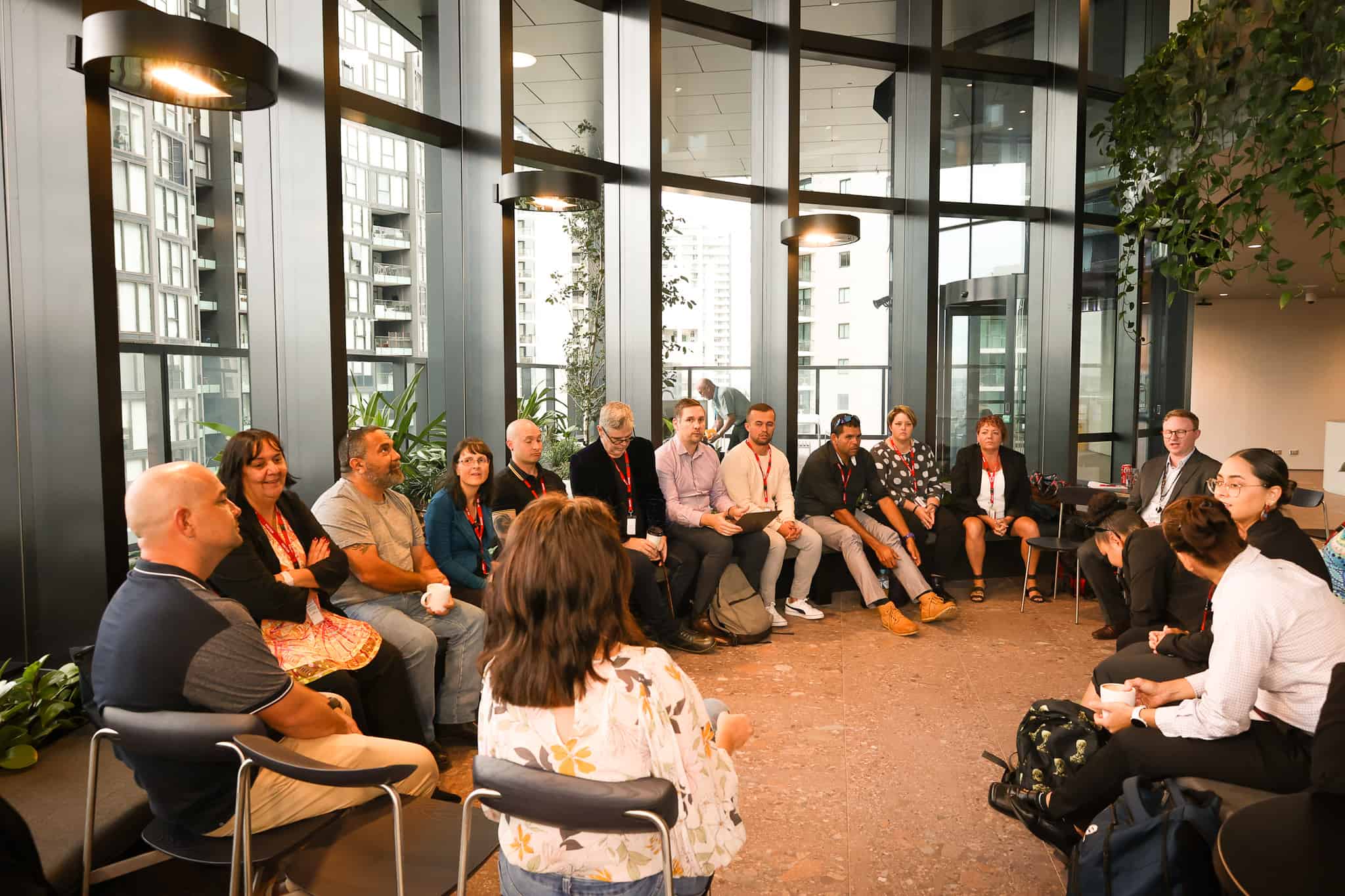
We’re making a real
difference in Australia. Join us.
You can support us to drive change and create a serious impact in your organisation, sector, and wider community. It’s not just enhancing how you lead, it’s building your own network and contributing for the greater good.
